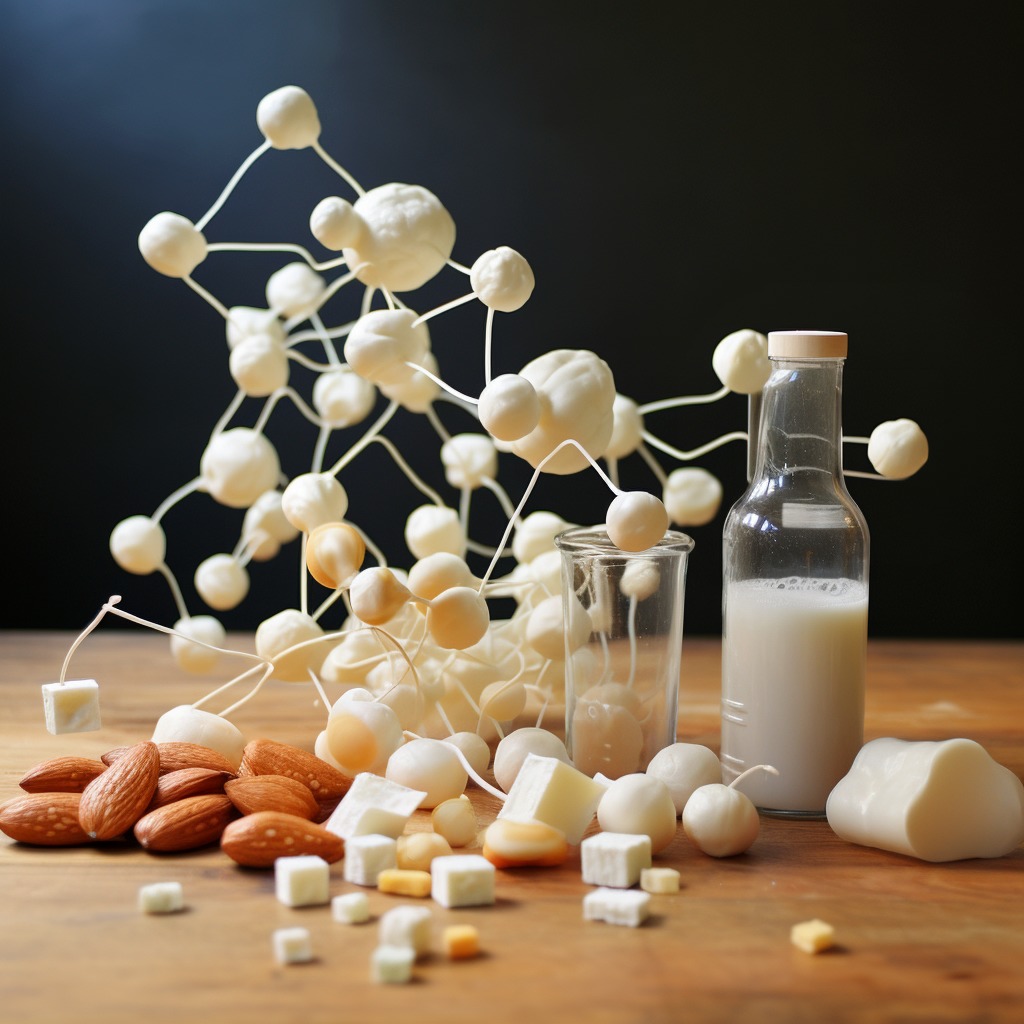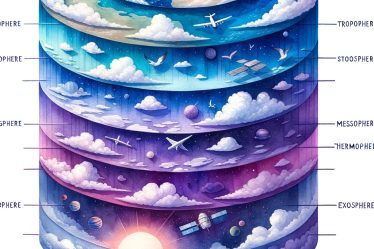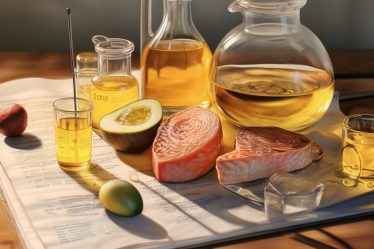
Welcome to an in-depth exploration of proteins, the essential molecules that orchestrate the symphony of life. From their basic building blocks to their complex structures, proteins are more than just the sum of their parts. They serve as the foundation for life, performing a wide range of functions that are crucial for the survival and well-being of living organisms.
Discover your ideal chemistry tutor at meet’n’learn and skyrocket your understanding to new heights!
Whether you’re a student, a teacher, a tutor, or someone with a keen interest in biochemistry, this comprehensive guide is designed just for you. Prepare to delve deep, challenge your understanding, and develop a newfound appreciation for these molecular wonders.
Here’s a glimpse of what you’ll learn:
- What Are Proteins?
- The Building Blocks: Amino Acids
- Protein Structure
- Functions of Proteins
- Proteins in Daily Life
Introduction to Proteins
Proteins are complex molecules that serve as the foundation for the structure and function of living organisms. They are essential for various biological activities, including cell signaling, immune responses, and metabolic reactions. This section introduces the fundamental concepts of proteins and their role in biological systems.
They comprise of smaller units called amino acids. 20 different types of amino acids can combine in various ways to form a protein. The sequence of amino acids determines the structure and function of the protein.
Proteins can be categorized based on their functions. For example, enzymatic proteins accelerate biochemical reactions, defensive proteins are involved in immune responses, and structural proteins support cells and tissues.
The structure of a protein is critical to its function. Proteins can have four levels of structure: primary, secondary, tertiary, and quaternary. Each level provides a different layer of complexity and functionality.
Understanding proteins is essential for various scientific fields, including medicine, biochemistry, and environmental science. The study of proteins can lead to advancements in medical treatments, agricultural methods, and even the development of new materials.
Want to expand your chemistry horizons? Our World of Chemistry offers a plethora of free educational blogs.
Need help with biology topics? Explore our extensive collection of biology educational blog posts designed to simplify complex concepts for you. Whether it’s photosynthesis, the intricacies of green algae, understanding bacteria and viruses, or delving into the fascinating world of genetics and cells, our resources have got you covered. Expand your knowledge and enhance your learning journey with us today.
The Building Blocks of Proteins: Amino Acids
Amino acids are the fundamental units that come together to form proteins. Think of them as the individual bricks that build a house. In the context of proteins, 20 standard amino acids serve as these building blocks. Each amino acid has a specific role and characteristic that contributes to the final shape and function of the protein.
The basic structure of an amino acid consists of a central carbon atom, an amino group (NH2), a carboxyl group (COOH), and a unique side chain. This side chain gives each amino acid distinct properties, such as acidic, basic, polar, or non-polar.
Amino acids link through peptide bonds to form a chain. This chain undergoes various folding processes to create the functional structure of a protein. The genetic code determines the sequence in which amino acids are arranged; even a small change in this sequence can significantly affect the protein’s function.
Examples of common amino acids and their roles
- Alanine: Involved in energy production.
- Lysine: Important for growth and tissue repair.
- Tryptophan: A precursor for neurotransmitters like serotonin.
- Cysteine: Forms disulfide bonds that help maintain protein structure.
Understanding amino acids is crucial for grasping how proteins function. They are not only the building blocks of proteins but also serve as intermediates in metabolism. Their study is fundamental to fields such as biochemistry, genetics, and pharmacology.
Explore Acids, Bases, pH, master Acid-Base Titration and learn to Calculate Solution Concentrations.
Protein Structure: The Blueprint of Function
Understanding the structure of a protein is key to unlocking its function. Proteins can have complex shapes, which are crucial for the tasks the proteins perform. In this section, we’ll explore the four levels of protein structure: primary, secondary, tertiary, and quaternary.
Primary Structure: This is the simplest level of protein structure. It refers to the sequence of amino acids in the protein. The primary structure is like the order of letters in a word; change the order, and you change the meaning.
Secondary Structure: At this level, the sequence of amino acids begins to coil or fold into basic shapes like alpha-helices and beta-sheets. These shapes are stabilized by hydrogen bonds between amino acids.
Tertiary Structure: This is where things get more complex. The basic shapes from the secondary structure fold further to form a 3D shape. This shape is crucial for the protein’s function and is stabilized by various types of bonds and interactions, such as disulfide bridges and hydrophobic interactions.
Quaternary Structure: Some proteins are made up of more than one polypeptide chain. When these chains come together, they form the quaternary structure. Hemoglobin, a protein in your red blood cells that carries oxygen, is an example of a protein with a quaternary structure.
Examples of proteins and their structures
- Collagen: A structural protein found in skin and connective tissues. It has a triple helix quaternary structure.
- Insulin: A hormone that regulates blood sugar levels. It has a monomeric and hexameric form, illustrating the importance of quaternary structure.
- Enzymes: These are proteins that speed up chemical reactions. Their structures are highly specialized to bind specific molecules.
Grasping the concept of protein structure is essential for understanding how proteins work. The structure dictates the function; even a minor alteration can significantly change how a protein operates.
Discover how Hydrogen Bonds and Covalent Bonds are formed, and learn to Differentiate Them from Ionic Bonds.
Functions of Proteins: The Many Hats They Wear
Proteins are the jack-of-all-trades in the cellular world, performing a myriad of essential functions for the survival and activity of living organisms. This section will delve into proteins’ various roles, from catalyzing reactions to providing structural support.
Enzymatic Functions: Enzymes are proteins that act as biological catalysts, speeding up chemical reactions that would otherwise take too long to sustain life. For example, the enzyme amylase breaks down starch into simpler sugars.
Defensive Functions: Antibodies are proteins that are part of the immune system. They identify and neutralize foreign substances like bacteria and viruses, helping to defend the body against infections.
Transport and Storage: Some proteins serve as carriers for molecules. Hemoglobin, for instance, transports oxygen in the blood, while ferritin stores iron in the liver.
Structural Support: Proteins like collagen and keratin provide structural integrity to various tissues. Collagen is a key component of connective tissues, while keratin is found in hair and nails.
Regulatory Functions: Hormones like insulin are proteins that regulate various physiological processes. Insulin controls blood sugar levels by facilitating the uptake of glucose into cells.
Motor Functions: Proteins like actin and myosin are involved in muscle contraction and movement. They convert chemical energy into mechanical work.
Examples of proteins and their functions
- DNA Polymerase: Involved in DNA replication.
- Ribonuclease: Breaks down RNA molecules.
- Lactase: Breaks down lactose in milk.
- Clotting Factors: Involved in blood coagulation.
Understanding the diverse functions of proteins is crucial for grasping the complexity of biological systems. Each protein has a specific role, and its structure is finely tuned to perform it effectively.
How to calculate Molar Mass, Mass Fraction, and Viscosity?
Overview of Protein Functions, Types, and Examples
| Function | Type of Protein | Examples |
|---|---|---|
| Enzymatic Functions | Enzymes | Amylase, Lipase |
| Defensive Functions | Antibodies | IgG, IgA |
| Transport and Storage | Transport Proteins | Hemoglobin, Ferritin |
| Structural Support | Structural Proteins | Collagen, Keratin |
| Regulatory Functions | Hormones | Insulin, Glucagon |
| Motor Functions | Motor Proteins | Actin, Myosin |
Ethanol and Alcohols in Chemistry explained.
Proteins in Daily Life: Beyond the Microscope
While proteins may seem like a topic confined to biology textbooks, they significantly impact our daily lives. Proteins are everywhere, From the food to the medicines we take. This section will examine some common ways proteins intersect with our everyday experiences.
Dietary Proteins: Proteins are essential nutrients found in foods like meat, eggs, and legumes. They are broken down into amino acids during digestion and then used to build and repair tissues.
Medical Applications: For example, insulin treats diabetes, and monoclonal antibodies are used in various therapies, including cancer treatment.
Industrial Uses: Enzymes are used in the production of biofuels, and protein-based adhesives are used in woodworking and paper production.
Environmental Impact: For example, nitrogen-fixing bacteria contain proteins that convert atmospheric nitrogen into a form that plants can use, reducing the need for synthetic fertilizers.
Examples of proteins in our daily life
- Gluten: A protein found in wheat that gives bread its structure.
- Casein: A milk protein used in cheese production.
- Lysozyme: Found in tears and saliva, it has antibacterial properties.
- Fibroin: A protein in silk used for textiles.
Explore Halogenides, Sulfides, and Hydroxides.
Educational Importance: The Role of Tutors
While textbooks and classroom lectures provide a foundational understanding of proteins, tutors can offer personalized guidance that enhances this knowledge. In this section, we’ll explore how tutors can be instrumental in deepening your understanding of proteins and their functions.
Clarifying Complex Concepts: The structure and function of proteins can be complex. Tutors can break down these complicated topics into manageable pieces, making them easier to understand.
Real-world Applications: Tutors can help connect the dots between theoretical knowledge and real-world applications, making the subject matter more relatable and interesting.
Academic Support: Whether it’s preparing for an exam or working on a class project, tutors can provide the academic support needed to excel in the subject.
Interactive Learning: Tutors often use interactive methods like quizzes, flashcards, and practical demonstrations to reinforce learning, making the study of proteins more engaging.
Here are some common questions that tutors can help answer:
- How do enzymes work?
- What is the significance of protein folding?
- How do proteins affect gene expression?
- What are the medical applications of proteins?
How a tutor can help Make Science Fun.
Are you looking for a chemistry tutor? Enter “chemistry tutor Glasgow” or “chemistry teacher Sheffield” on your preferred tutoring platform, such as meet’n’learn, to find a teacher who can meet your specific needs.
If you thrive in group learning environments, search “chemistry classes London” or “chemistry lessons Manchester” online to discover local schools offering chemistry lessons.
Engaging with a tutor can provide a more nuanced understanding of proteins, filling in gaps that may exist after classroom learning. Their expertise can be invaluable for students aiming to master the subject.
What are Functional Groups in organic chemistry?
Introduction to the Periodic Table and how to memorize it.
The basics of Polymers.
What have we discovered about proteins?
Proteins are an indispensable part of life, serving as the building blocks for biological structures and functions. From their basic units of amino acids to their complex structures and diverse roles, proteins are a fascinating subject that intersects with various scientific disciplines and everyday life.
Understanding proteins is not just for academics; it has practical implications in medicine, industry, and environmental science. Whether you’re a student, teacher, or simply someone interested in science, studying proteins offers a wealth of knowledge that can be applied in numerous ways.
We’ve covered a lot of ground in this blog, from the basics of amino acids and protein structure to their functions and relevance in daily life. We also discussed the role of tutors in enhancing understanding of this complex topic. It’s a subject that’s as vast as it is vital, and we’ve only scratched the surface.
If you’re intrigued by what you’ve learned, don’t stop here. Dive deeper, ask questions, and explore the incredible world of proteins.
Discover the chemistry behind Water and Photosynthesis.
Frequently Asked Questions: Proteins
1. What are the basic building blocks of proteins?
The basic building blocks of proteins are amino acids. 20 standard amino acids combine in various sequences to form proteins.
2. How do proteins differ from each other?
Proteins differ from each other in their amino acid sequence, which determines their structure and function. Even a small change in the sequence can significantly alter the protein’s properties.
3. What roles do proteins play in the body?
Proteins perform a wide range of functions in the body, including enzymatic activity, defense against pathogens, transport of molecules, structural support, and regulation of physiological processes.
4. Why is protein structure important?
The structure of a protein is crucial for its function. Proteins can have four levels of structure: primary, secondary, tertiary, and quaternary. Each level adds a layer of complexity and functionality.
5. How are proteins related to genes?
Genes contain the instructions for making proteins. The sequence of nucleotides in a gene determines the sequence of amino acids in the corresponding protein.
6. How do enzymes work?
Enzymes are proteins that act as biological catalysts. They speed up chemical reactions by lowering the activation energy required for the reaction to occur.
Check out 8 Exciting Science Experiments for Kids and unravel The Greatest Discoveries in Biology.


